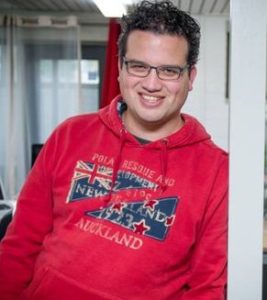Share–Engage-Optimize the SEO Way : Success Story of Yoast
Nowadays, with Internet access having reached an all-time high, it is not easy to keep customers engaged and satisfied. There is so much content out there on the web that it is quite easy to get lost amongst all that noise and clutter. To stand out and be heard, articles, blogs and all other kinds of media need to be unique and engaging. They also need to follow the right SEO practices so that they are picked up by search engines. Search engine optimisation is every marketers and content creator’s best friend, as it helps their work get the recognition it deserves. The undoubted king of WordPress SEO is Yoast, and this time around, we will be taking a look at how the company started and got to where it is now.
About the Founders

Joost de Valk started his career working for a digital marketing company. He gave that up and began consulting for big corporations such as eBay and The Guardian. While doing this, he was working on a project of his own- a plugin that would help websites boost their SEO score. It started as a mere hobby because Valk was interested in the algorithms governing SEO.
After a while, he started sensing that there was more to this than what met the eyes, and he began to take it more seriously than just a hobby. He became so busy with this hobby that his actual work started suffering. That was when his wife suggested that maybe he needed to quit his job and start trying to make some money out of the plugin he was working on.
Founding Yoast
The entire empire we now know as Yoast started as one man’s hobby in 2010! He started his blog in 2004, named joostdevalk.nl, and in 2006, began css3.info. In June 2008, he began yoast.com and started making money through advertisements placed on the blog. Halfway through 2010, he felt the time was right to invest in Yoast full time, giving up his job and founding the company.
The journey started with Video SEO, then came WordPress SEO Premium, and this morphed into Yoast SEO Premium. All these ventures became so successful, so fast that they had to make a company around these services. De Valk was the only one involved, handling everything from consulting, to support for the first few years. The initial years were very taxing as he had to single-handedly manage to support the development and testing all on his own. During these years, it was his wife who served as his biggest supporter and aid. Even today it is Joost, Marieke, his wife, and their first employee, Michiel Heijmans who handles almost all the management and logistics.
Joost’s wife, Marieke, shares Joost’s busy lifestyle having majored in sociology with a PhD in Criminology. She began her career as a researcher at Avans University in Den Bosch. But, as her husband’s company, Yoast started picking up, she decided to help out her partner with his work. Her love for writing inspired her to begin creating eBooks, and soon enough, the idea flourished. Marieke is responsible for the entire Yoast Academy tab and has been a tremendous power in assisting in growing the company.
An Instant Success
WordPress is a well-oiled machine that hosts over 74 million websites, and slowly Yoast started gaining momentum, becoming a regular feature in millions of those websites. One of the most significant issues they have had is maintaining and providing support to millions of beloved users.
Joost had to focus on testing early on, as once the business started to expand exponentially, making sure the version had no bugs or errors got more important than ever before. In the early years of the company, testing was an afterthought that rose when someone encountered an error. That practice is long gone, with testing getting two full weeks, as a means to prevent trouble later on in the release.
Yoast SEO 3.0 was a landmark release, as the company shifted 35-40% of their code from PHP to JavaScript. To facilitate the extensive testing that was necessary for this, the team expanded to include about ten developers and ten other support staff. It is astonishing how such a small group is able to pull off such mammoth tasks.
With the company expanding daily, they are in “full-on hiring mode,” having deviated from Joost’s initial plan of never taking on any employees. The team now includes 32 people in the Netherlands and over 50 worldwide. The team has also introduced several fun methods to make the team feel like a family. One such plan includes a “Know Your Colleague” Quiz which contains over 26 questions regarding the music taste and favourite colour of employees. The team also has a 40-hour workweek, unlike other start-ups and tech companies which demand a minimum of 60 hours a week, with Joost working for longer hours, as he is the leading man.
Joost de Valk single-handedly built WordPress tools to help site owners optimize their content and get discovered by search engines. Doing so helped make webpages more user-friendly, intuitive and reliable, making him one of the chief names in SEO. What makes this success story so inspiring is the fact that it is essentially the story of one man turning his hobby into a multi-million-dollar business!

Being a cinephile with a love for all things outdoorsy, Athulya never misses a chance to chase inspiring stories or poke fun at things, even when the subject is herself. Currently pursuing a degree in mechanical engineering, she is someone innately interested in technical and scientific research. Music reviews and op-eds define her as they allow her to explore different perspectives. Though sometimes she thinks she makes more sense playing the guitar than she does while writing.












